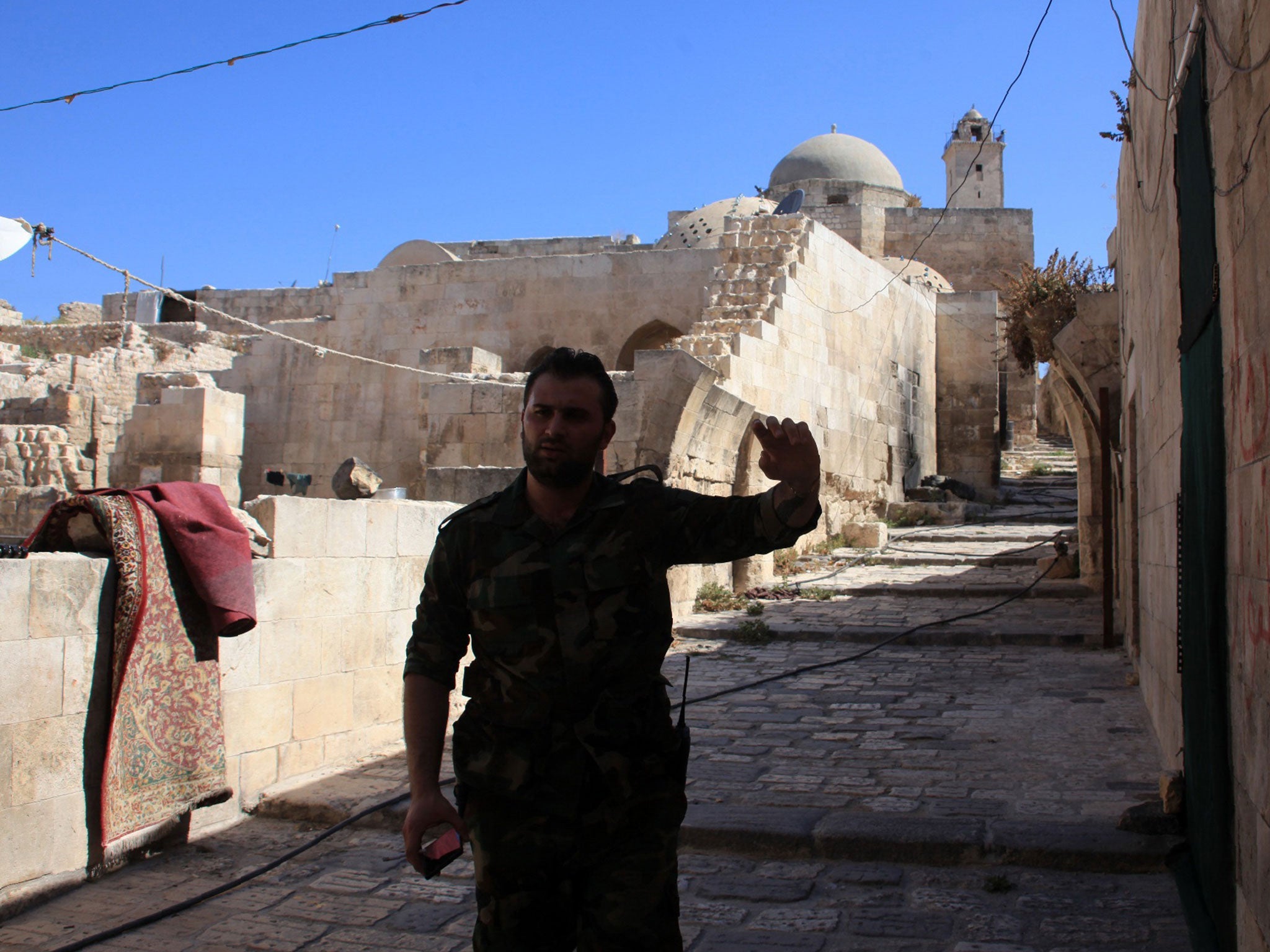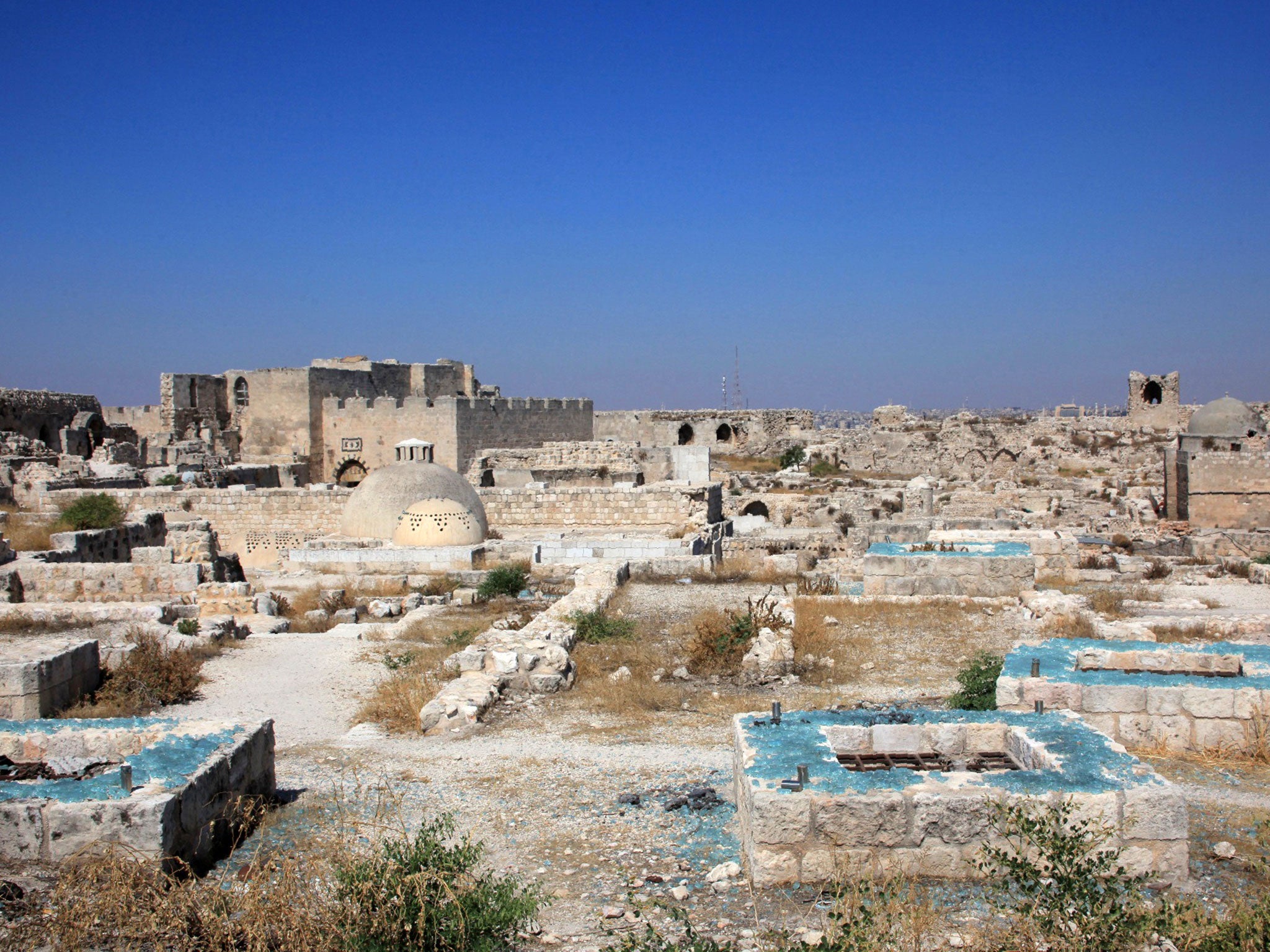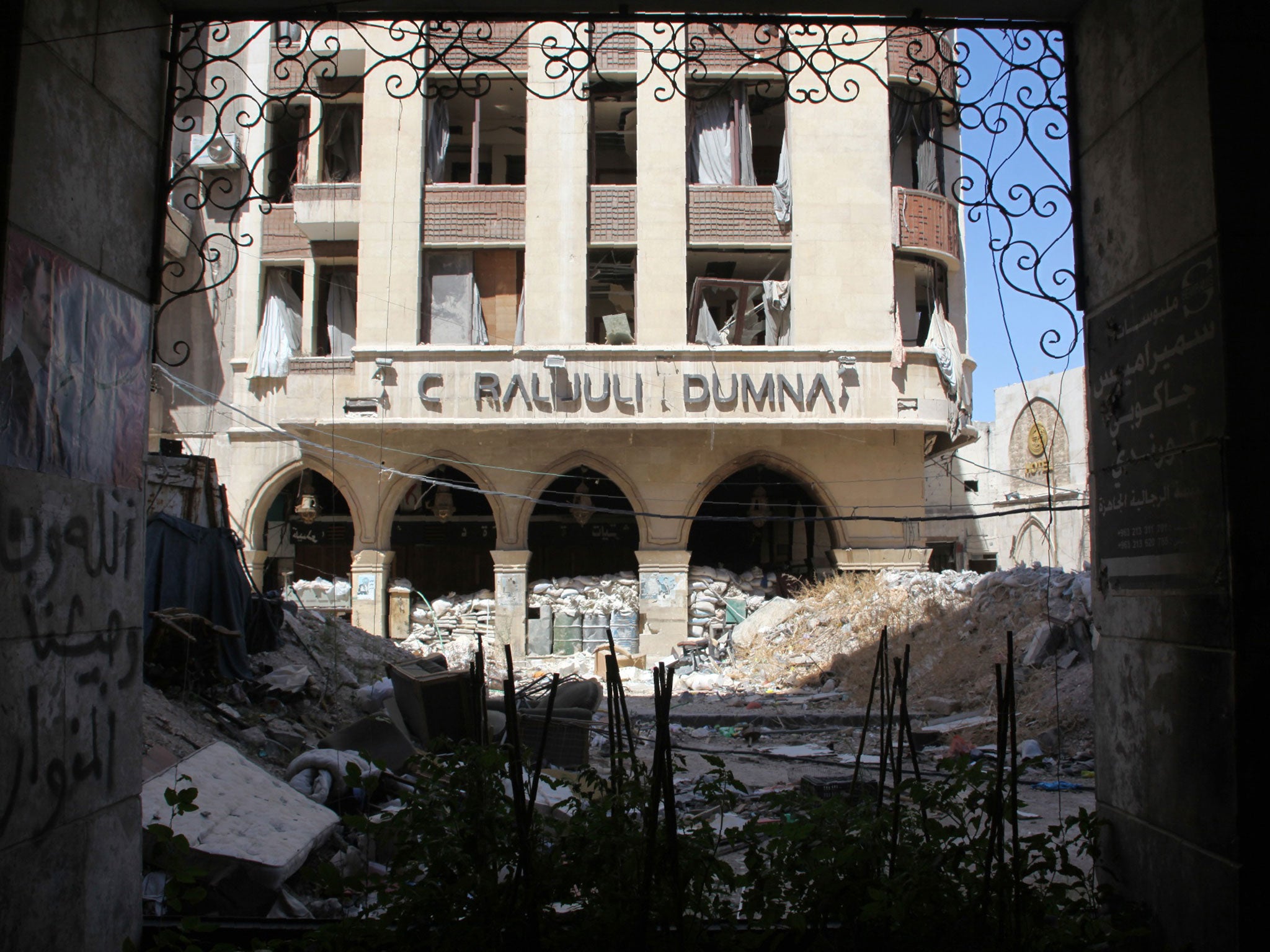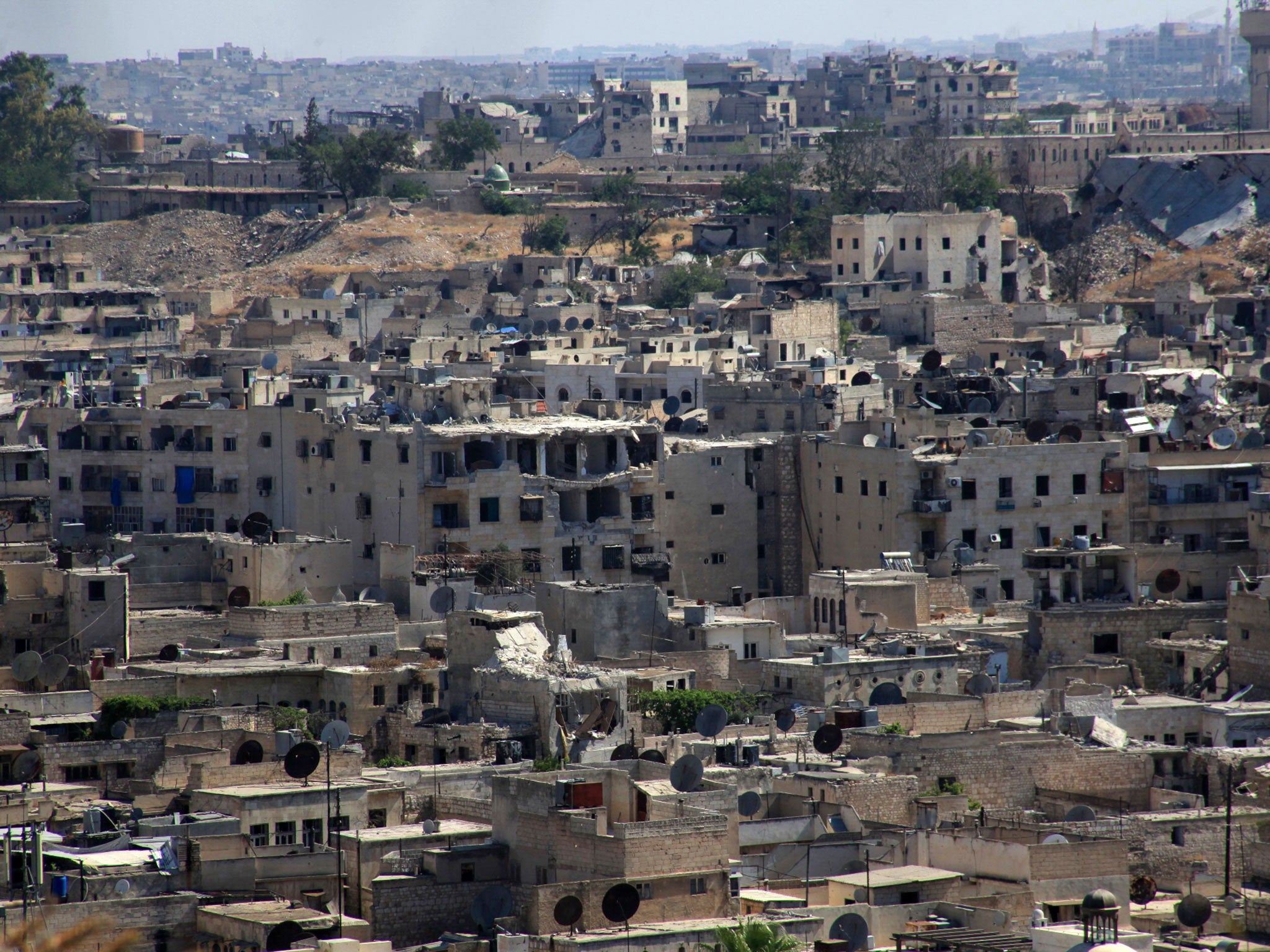Inside Aleppo, the Syrian city with a past and present shaped by war
Robert Fisk tours Aleppo and finds a broken civilisation with painful reminders of ancient tragedies

Your support helps us to tell the story
From reproductive rights to climate change to Big Tech, The Independent is on the ground when the story is developing. Whether it's investigating the financials of Elon Musk's pro-Trump PAC or producing our latest documentary, 'The A Word', which shines a light on the American women fighting for reproductive rights, we know how important it is to parse out the facts from the messaging.
At such a critical moment in US history, we need reporters on the ground. Your donation allows us to keep sending journalists to speak to both sides of the story.
The Independent is trusted by Americans across the entire political spectrum. And unlike many other quality news outlets, we choose not to lock Americans out of our reporting and analysis with paywalls. We believe quality journalism should be available to everyone, paid for by those who can afford it.
Your support makes all the difference.Maybe dust is the vital physical element of war. It lay across the old cobbled streets of the burned Aleppo soukh of Abdul Hamid, in the cindered wooden shops of al-Ajami Street, thick in the air as we sprinted across the road just east of the pulverised minaret and wreckage of the Omayyad Mosque of Sulieman ben Abdul Malik. Its grey particles cloaked this ancient place like an unwanted blessing, history on the retreat.
There had been a small retreat, too, among the still contested alleyways of the medieval centre of this tragic city. Each time I come here, the Nusrah Front have advanced a little further into the west of Aleppo, the Syrians retired to what we used to call “prepared positions”, a few hundred metres of movement here and there amid the ruins.
But the front lines have now congealed into the ground, plastic sheets concealing the entrances of old buildings from snipers, three new Russian-built BMP armoured vehicles of the Syrian army nestling beneath the gold and red Ottoman-style lanterns of a long-devastated hotel.
But above it all still stands the Citadel of the Emir Sayf al-Dawla al-Hamadani, its towering battlements – most of them mysteriously untouched by the storm of shellfire that has descended over the city – clustered on top of the 120ft hill that has been a foundation of civilisations here for five thousand years. You can wander down alleys with the summer wind tugging viciously at the broken corrugated iron shutters of destroyed jewelry stores, past a shattered mosque in a street whose partial name of Swayqat Hatin is still visible on a blue sign at the corner, and glimpse every minute or two – for just two seconds – the great hot, bright fortress high above, white against the blue summer sky, one of the greatest citadels of the world.
There’s another blown-apart mosque near the soukh of Khan al-Wazir, a cluster of dust-enshrouded chandeliers still dripping from the roof. And then a colonnaded Ottoman school, a road surrounded by the pancaked slabs of modern government offices, a vista of pre-stressed concrete hanging from rusting steel wire – a Dresden touch here to remind the prowling visitor that war does not just belong to history – and a clutch of Syrian soldiers in t-shirts holding cigarettes and radios. Less than a hundred metres away, an army major is watering his home-made garden of sunflowers on the road.

That’s what you call a “quiet” front line, although guns rumble away all day and night around Aleppo, their shells arcing over the old city, only the occasional sniper’s rifle cutting the silence. And then, in the shade of a gutted shop, we descend down some dirty stone steps and set off into the darkness of a tunnel only six-feet wide, its thick dust more frightening now than benevolent, plodding over stones and sandbags and plastic boxes used to raise the floor above small lakes of water. The Syrians send just one uncommunicative soldier with us, a man called Ali with relatives in southern Lebanon. His only warning is to remain silent. We are passing beneath the Nusrah front line that surrounds the citadel. The regime’s enemies are now a few feet above us.
But after a hundred metres, the walls are made of cut stone, the floor shiny with hundreds of years of movement. We are now in an ancient tunnel whose Muslim builders made this passageway through the living stone for men who wore armour and carried swords and oil and rope and food centuries before our pathetic medieval European wars, long before the Renaissance and the Reformation, before a poet wrote that stone walls do not a prison make – although the cold walls of the Aleppo Citadel tunnel, almost half a mile in length, felt like a prison to us.

No oil lamps moved through this passageway, just the white glare of our mobile phone lights as we stumbled along. We climbed up a millennium-old spiral of steps, as crumbling as the civilisations for which they had been constructed, and emerged beneath a great, cool archway and then into a sunlight so bright it felt like someone was firing a blowtorch in our direction. And so we found ourselves on the battlements, still held by the Syrian army – heavy machine-guns wedged into their castellated inner walls, wind-thrashed, torn red, black and white flags cracking above towers and the overgrown foundations of castle bathhouses and ancient barracks.

You could see why the Emirs defended this place. The low hills of the Turkish border to the north, the great vista of plains stretching towards that ominous city of Raqqa, the grey-brown rim to the south-east where the desert road triangles its way to Damascus; it’s a warrior’s dream.
But below, through the niches in the 3ft-thick walls, we could peer out over a vista of barricades of trucks and furniture and muck-covered roads and drifting smoke, into eastern Aleppo where the remaining civilians under opposition rule exist or die from a life of misery beneath the government’s grenades and bombs.
High altitude jets flew over, too tiny to see in the cerulean sky and there were flat explosions to the east that shook the air but which revealed curiously no smoke. The people of Aleppo say you can see the Syrian jets but never the Russian bombers, which fly too fast or too high for the naked eye.
The west of the city, under rebel shellfire but with its universities and shops open, its traffic cops still weirdly standing duty at street junctions, baked in the midday sun. And around us stood, with inlaid marble floor, The Hall of Thrones, and, behind black walls, The Temple of the God of Storm, Hodod. Yet many of the structures on this fortress plateau had been destroyed in antiquity. The Citadel of Aleppo had not always given safe shelter to its defenders.
For many of these broken walls and door lintels, exposed by archeologists over 200 years, had originally been laid waste by a conqueror more powerful than the Nusrah Front or Isis or any other Islamists, a man known to those who feared him as the Curse of God. Yes, broken Aleppo’s history may be, but high up on the Citadel, right in front of us today, lie the houses laid waste by someone infinitely worse than the present-day butchers of Syria: Genghis Khan.
Join our commenting forum
Join thought-provoking conversations, follow other Independent readers and see their replies
Comments